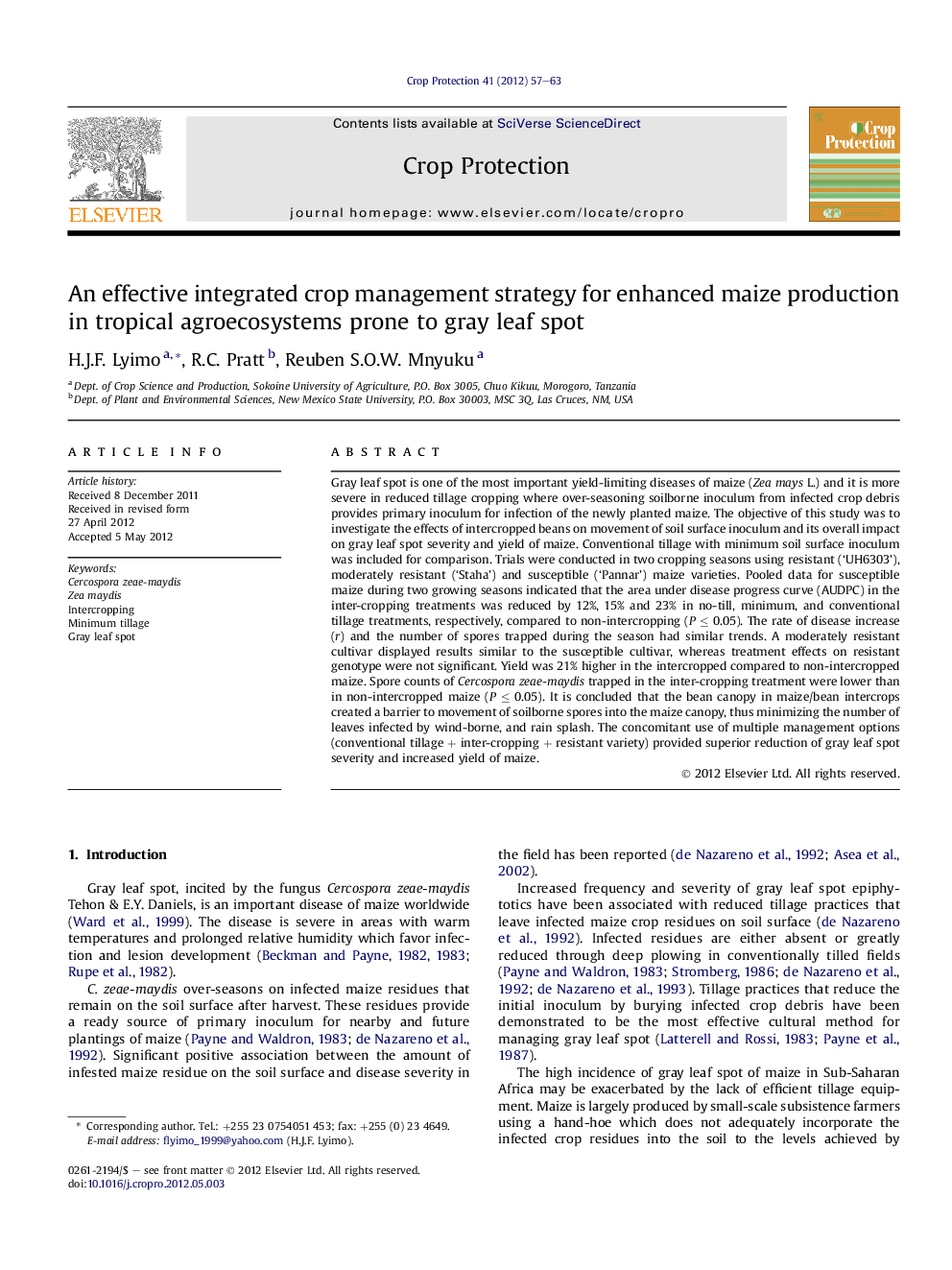| کد مقاله | کد نشریه | سال انتشار | مقاله انگلیسی | نسخه تمام متن |
|---|---|---|---|---|
| 4506215 | 1624346 | 2012 | 7 صفحه PDF | دانلود رایگان |

Gray leaf spot is one of the most important yield-limiting diseases of maize (Zea mays L.) and it is more severe in reduced tillage cropping where over-seasoning soilborne inoculum from infected crop debris provides primary inoculum for infection of the newly planted maize. The objective of this study was to investigate the effects of intercropped beans on movement of soil surface inoculum and its overall impact on gray leaf spot severity and yield of maize. Conventional tillage with minimum soil surface inoculum was included for comparison. Trials were conducted in two cropping seasons using resistant (‘UH6303’), moderately resistant (‘Staha’) and susceptible (‘Pannar’) maize varieties. Pooled data for susceptible maize during two growing seasons indicated that the area under disease progress curve (AUDPC) in the inter-cropping treatments was reduced by 12%, 15% and 23% in no-till, minimum, and conventional tillage treatments, respectively, compared to non-intercropping (P ≤ 0.05). The rate of disease increase (r) and the number of spores trapped during the season had similar trends. A moderately resistant cultivar displayed results similar to the susceptible cultivar, whereas treatment effects on resistant genotype were not significant. Yield was 21% higher in the intercropped compared to non-intercropped maize. Spore counts of Cercospora zeae-maydis trapped in the inter-cropping treatment were lower than in non-intercropped maize (P ≤ 0.05). It is concluded that the bean canopy in maize/bean intercrops created a barrier to movement of soilborne spores into the maize canopy, thus minimizing the number of leaves infected by wind-borne, and rain splash. The concomitant use of multiple management options (conventional tillage + inter-cropping + resistant variety) provided superior reduction of gray leaf spot severity and increased yield of maize.
► Interaction of Phaseolus beans with soil borne-inoculum was investigated in maize bean intercrop.
► Gray leaf spot and spore trapped during the season was high in non-intercropped.
► There were yield increase of 21% in the intercropped compared to non-intercropped maize.
► Convectional tillage + inter-cropping + resistant varieties provide superior reduction of gray leaf spot.
► Peak spore trap occurred at low rainfall, high relative humidity and low wind speed.
Journal: Crop Protection - Volume 41, November 2012, Pages 57–63